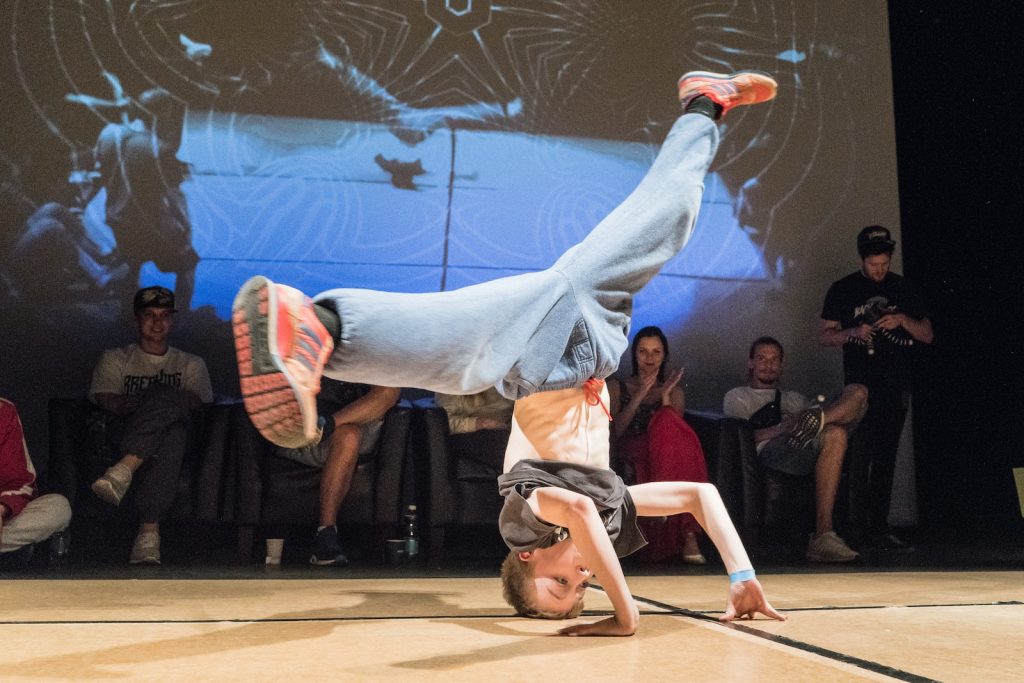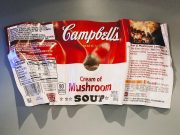Are you interested in breakdancing but don’t know where to start? Look no further! Breakdancing, also known as B-boying or breaking, is a dynamic and energetic dance style that originated in the 1970s in New York City. It combines acrobatic movements, footwork, spins, and freezes to create a unique and impressive dance form.
In this beginner’s guide to breakdancing, we’ll focus on two essential breaking elements: spinning and grooving. Spinning involves fast and continuous rotations of the body, while grooving refers to the rhythmic movement of the body in time with the music. Both of these elements are crucial to building a strong foundation in breakdancing and can be used in various moves and transitions.
Whether you’re a complete novice or have some experience in dance, this guide will provide you with the necessary knowledge and techniques to start spinning and grooving like a pro. So, grab your dancing shoes, and let’s start this exciting journey into the world of breakdancing!
History of Breakdancing
Breakdancing, also known as B-boying or breaking, is a dance style that originated in the late 1960s and early 1970s in the South Bronx of New York City. It was a form of expression that emerged from the African American and Latino communities in response to the social and economic challenges faced by those communities at the time.
The origins of breakdancing can be traced back to the block parties held in the South Bronx during the 1970s. DJs would play music using turntables and mixers, creating new sounds by manipulating vinyl records. The dancers who attended these parties began to incorporate acrobatic moves and footwork into their dancing, creating a new style that would later be known as breakdancing.
One of the earliest and most influential breakdancing crews was the Rock Steady Crew, founded in 1977 by Jojo and Jimmy D. The crew helped popularize breakdancing by performing at various events and on television shows such as Soul Train and Saturday Night Live.
During the 1980s, breakdancing grew in popularity and became a mainstream cultural phenomenon. The release of movies such as Wild Style and Beat Street helped to popularize the dance style further, and breakdancing began appearing in music videos and television commercials.
However, by the end of the 1980s, breakdancing’s popularity had declined, and it was no longer featured as prominently in popular culture. Nonetheless, the dance style continued to evolve and develop, remaining an important part of hip-hop culture.
In the 1990s and 2000s, breakdancing experienced a resurgence in popularity as the dance pioneers inspired new generations of dancers. Today, breakdancing is recognized as a competitive sport and is included in events such as the Youth Olympic Games and the World Urban Games.
Overall, breakdancing has a rich history that is deeply rooted in hip-hop culture and the African American and Latino communities of New York City. It has evolved and developed over the years, but its core elements of creativity, self-expression, and athleticism remain constant. As it continues to grow and evolve, breakdancing will undoubtedly continue to be a significant cultural force for years to come.
Basics: Footwork & Toprock
Mastering the basics of footwork and toprock is essential for anyone looking to become a skilled breakdancer. These two elements form the foundation of breakdancing and are used in almost every move and transition.
Footwork refers to the intricate movements of a breakdancer’s feet and legs while on the ground. Countless footwork patterns and combinations, but some of the most basic ones include the 6-step, 3-step, and CCs. These patterns involve stepping, twisting, and spinning the feet and legs in various directions while maintaining a low center of gravity. Footwork is a fundamental element of breakdancing, as it allows the dancer to move fluidly and creatively while on the ground.
Toprock, on the other hand, refers to the movements of the upper body and feet that a breakdancer performs while standing up. Toprock is often the first element that a breakdancer will perform in a battle, allowing the dancer to showcase their style, rhythm, and musicality. Some basic toprock moves include the Indian, salsa, and kick steps. Toprock is all about looking confident and stylish, and it’s essential to develop a strong sense of rhythm and musicality to be successful in this aspect of breakdancing.
To become proficient in footwork and toprock, it’s essential to practice regularly and focus on mastering the basics before moving on to more advanced moves. Footwork can be practiced by breaking down each pattern and practicing it slowly before building up speed and fluidity. Toprock can be practiced by focusing on maintaining a steady rhythm and incorporating different foot and upper body movements to create unique and stylish combinations.
In conclusion, mastering the basics of footwork and toprock is essential for anyone looking to become a skilled breakdancer. These two elements form the foundation of breakdancing and are used in almost every move and transition. By practicing regularly and focusing on developing your rhythm, musicality, and creativity, you can become a proficient breakdancer and take your skills to the next level.
Spinning: Windmills & Headspins

Spinning is a critical element of breakdancing and involves fast and continuous body rotations. There are several types of spins in breakdancing, but two of the most impressive and challenging are windmills and headspins.
Windmills are one of the most iconic moves in breakdancing and involve spinning around in a circular motion while using the momentum of your legs to propel your body forward. Windmills require a lot of upper body strength and flexibility, as well as a high level of coordination and control. To perform a windmill, you start in a seated position with one leg extended and the other tucked in close to your body. You then swing your legs in a circular motion while simultaneously shifting your weight back and forth and using your arms to support your body. Windmills require a lot of practice to master, but once you get the hang of them, they can be a crowd-pleaser.
Headspins are another impressive spinning move that requires a high level of skill and practice to master. As the name suggests, headspins involve spinning on your head while using your arms and legs to maintain balance and control. Headspins require a lot of neck strength and control and a lot of practice to build up the necessary momentum and balance. To perform a headspin, you start by kneeling on the ground with your head resting on the floor. You then use your arms and legs to create momentum and lift your legs off the ground while simultaneously spinning your head in a circular motion. Headspins are visually impressive and require a lot of mental focus and determination.
In conclusion, spinning is a crucial element of breakdancing and requires a lot of skill, practice, and dedication to master. Windmills and headspins are two of the most impressive and challenging spinning moves in breakdancing, and they require a lot of upper-body strength, flexibility, coordination, and control. With practice and perseverance, however, anyone can learn to spin like a pro and add an exciting and dynamic element to their breakdancing repertoire.
Grooving: Body Movements & Isolations
It is an essential element of breakdancing and involves adding style, musicality, and personality to your movements. It is all about adding your unique flavor and flair to the dance, and several key body movements and isolations can help you achieve this.
Body movements refer to how you move your body, such as swaying, bouncing, or twisting. Body movements are essential to the grooving, as they allow you to express yourself and your personality through your dance. Some popular body movements in breakdancing include the wave, the chest pop, and the body roll. These movements can be practiced individually or incorporated into larger dance sequences to create dynamic and visually appealing performances.
Isolations, on the other hand, refer to the ability to move specific body parts independently of one another. Isolations are essential for creating sharp and precise movements and adding complexity and depth to your dance. Some popular isolations in breakdancing include the arm wave, the head isolation, and the body wave. Isolations can be challenging to master, as they require a lot of coordination and control, but they can add a unique and impressive element to your dance.
To become proficient in grooving, it’s essential to practice regularly and focus on developing your sense of rhythm, musicality, and creativity. Body movements can be practiced by breaking down each movement and practicing it slowly before building up speed and fluidity. Isolations can be practiced by isolating specific body parts and focusing on moving them independently of one another.
In conclusion, grooving is a crucial element of breakdancing and allows you to add your own unique style and personality to your dance. Body movements and isolations are two key components of grooving and require a lot of practice and dedication to master. By focusing on developing your rhythm, musicality, and creativity, you can become a proficient breakdancer and take your skills to the next level.
Tips for Beginners
If you’re a beginner looking to get started with breakdancing, here are some tips to help you on your journey:
- Start with the basics: Before diving into more advanced moves, focus on learning the foundational elements of breakdancing, such as toprock, footwork, and freezes. These moves may seem simple, but they form the building blocks of breakdancing and are essential for developing a strong foundation.
- Practice regularly: Consistency is key when it comes to breakdancing. Try to practice a few times weekly to build muscle memory, improve your technique, and develop your skills. Even practicing for 10-15 minutes daily can make a big difference over time.
- Watch and learn from others: One of the best ways to improve your breakdancing skills is to watch and learn from more experienced dancers. Watch videos online or attend local dance battles or workshops to observe the techniques and styles of other breakdancers.
- Focus on proper form and technique: As a beginner, developing proper form and technique is important to prevent injury and ensure you perform the moves correctly. Start with slow and controlled movements, gradually increasing speed and intensity over time.
- Be patient and persistent: Breakdancing is a challenging and complex dance style that requires much time and effort to master. Don’t get discouraged if you don’t see progress immediately – keep practicing and pushing yourself, and you’ll eventually start to see results.
- Stay hydrated and take care of your body: Breakdancing is a physically demanding dance style that can take a toll on your body. Stay hydrated, eat a healthy diet, and take breaks when you need to prevent injuries and keep your body in top shape.
In conclusion, breakdancing is a challenging and rewarding dance style that requires patience, dedication, and hard work to master. By following these tips and committing to regular practice, you can improve your skills and become a proficient breakdancer over time.
Conclusion
In conclusion, breakdancing is a unique and exciting dance style that offers a great way to express yourself and have fun. While it may take some time and effort to master the moves, the journey is worth it for the sense of accomplishment and the joy of performing. Remember: if all else fails, you can always break out the classic move of flailing your arms wildly and calling it the “spastic chicken.” But let’s hope it doesn’t come to that! Keep practicing, stay dedicated, and maybe you’ll steal the dance floor show one day.






























